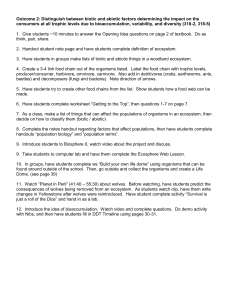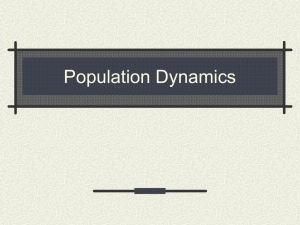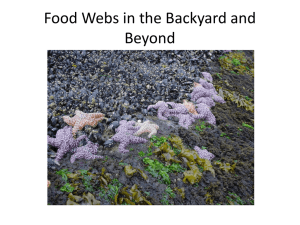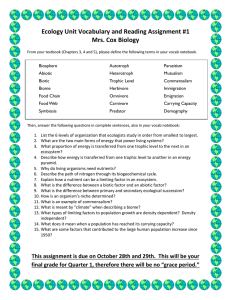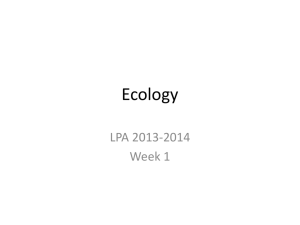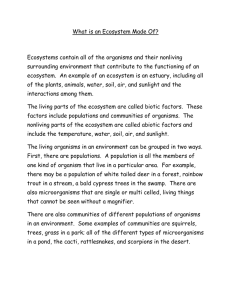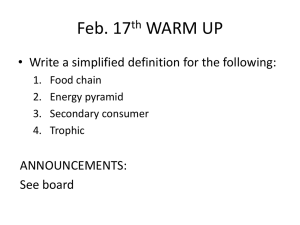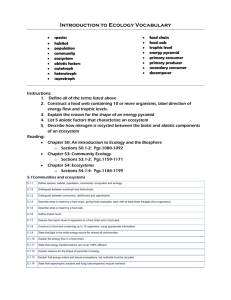ADVANCED PLACEMENT BIOLOGY STUDENT RUBRICS UNIT 1
advertisement
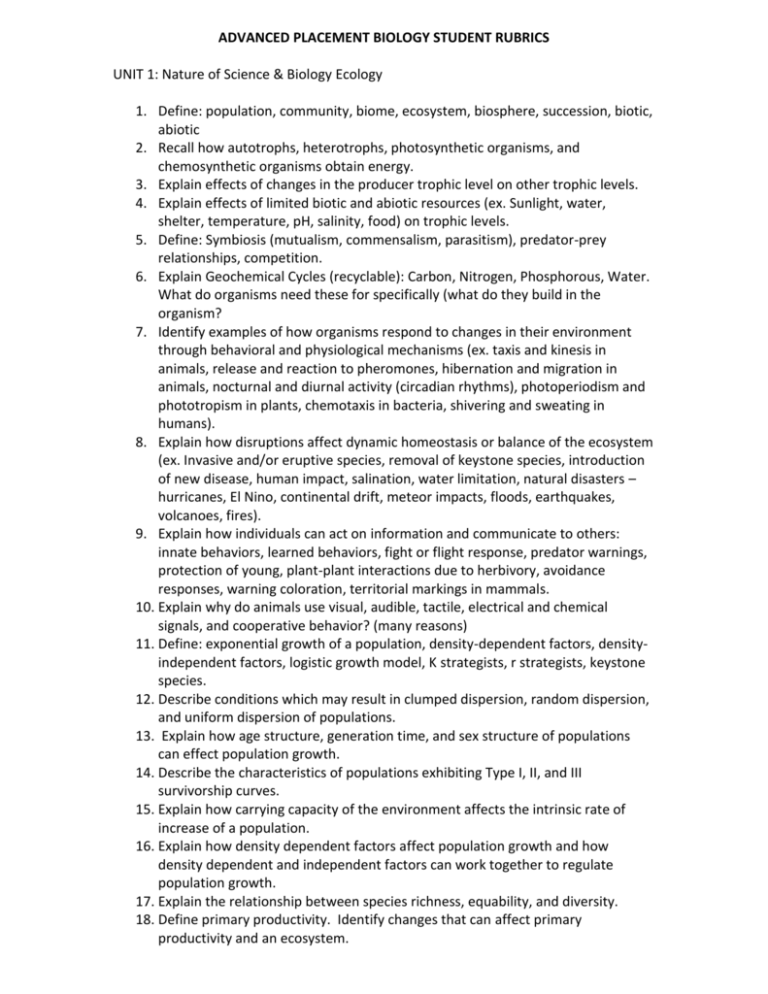
ADVANCED PLACEMENT BIOLOGY STUDENT RUBRICS UNIT 1: Nature of Science & Biology Ecology 1. Define: population, community, biome, ecosystem, biosphere, succession, biotic, abiotic 2. Recall how autotrophs, heterotrophs, photosynthetic organisms, and chemosynthetic organisms obtain energy. 3. Explain effects of changes in the producer trophic level on other trophic levels. 4. Explain effects of limited biotic and abiotic resources (ex. Sunlight, water, shelter, temperature, pH, salinity, food) on trophic levels. 5. Define: Symbiosis (mutualism, commensalism, parasitism), predator-prey relationships, competition. 6. Explain Geochemical Cycles (recyclable): Carbon, Nitrogen, Phosphorous, Water. What do organisms need these for specifically (what do they build in the organism? 7. Identify examples of how organisms respond to changes in their environment through behavioral and physiological mechanisms (ex. taxis and kinesis in animals, release and reaction to pheromones, hibernation and migration in animals, nocturnal and diurnal activity (circadian rhythms), photoperiodism and phototropism in plants, chemotaxis in bacteria, shivering and sweating in humans). 8. Explain how disruptions affect dynamic homeostasis or balance of the ecosystem (ex. Invasive and/or eruptive species, removal of keystone species, introduction of new disease, human impact, salination, water limitation, natural disasters – hurricanes, El Nino, continental drift, meteor impacts, floods, earthquakes, volcanoes, fires). 9. Explain how individuals can act on information and communicate to others: innate behaviors, learned behaviors, fight or flight response, predator warnings, protection of young, plant-plant interactions due to herbivory, avoidance responses, warning coloration, territorial markings in mammals. 10. Explain why do animals use visual, audible, tactile, electrical and chemical signals, and cooperative behavior? (many reasons) 11. Define: exponential growth of a population, density-dependent factors, densityindependent factors, logistic growth model, K strategists, r strategists, keystone species. 12. Describe conditions which may result in clumped dispersion, random dispersion, and uniform dispersion of populations. 13. Explain how age structure, generation time, and sex structure of populations can effect population growth. 14. Describe the characteristics of populations exhibiting Type I, II, and III survivorship curves. 15. Explain how carrying capacity of the environment affects the intrinsic rate of increase of a population. 16. Explain how density dependent factors affect population growth and how density dependent and independent factors can work together to regulate population growth. 17. Explain the relationship between species richness, equability, and diversity. 18. Define primary productivity. Identify changes that can affect primary productivity and an ecosystem.

